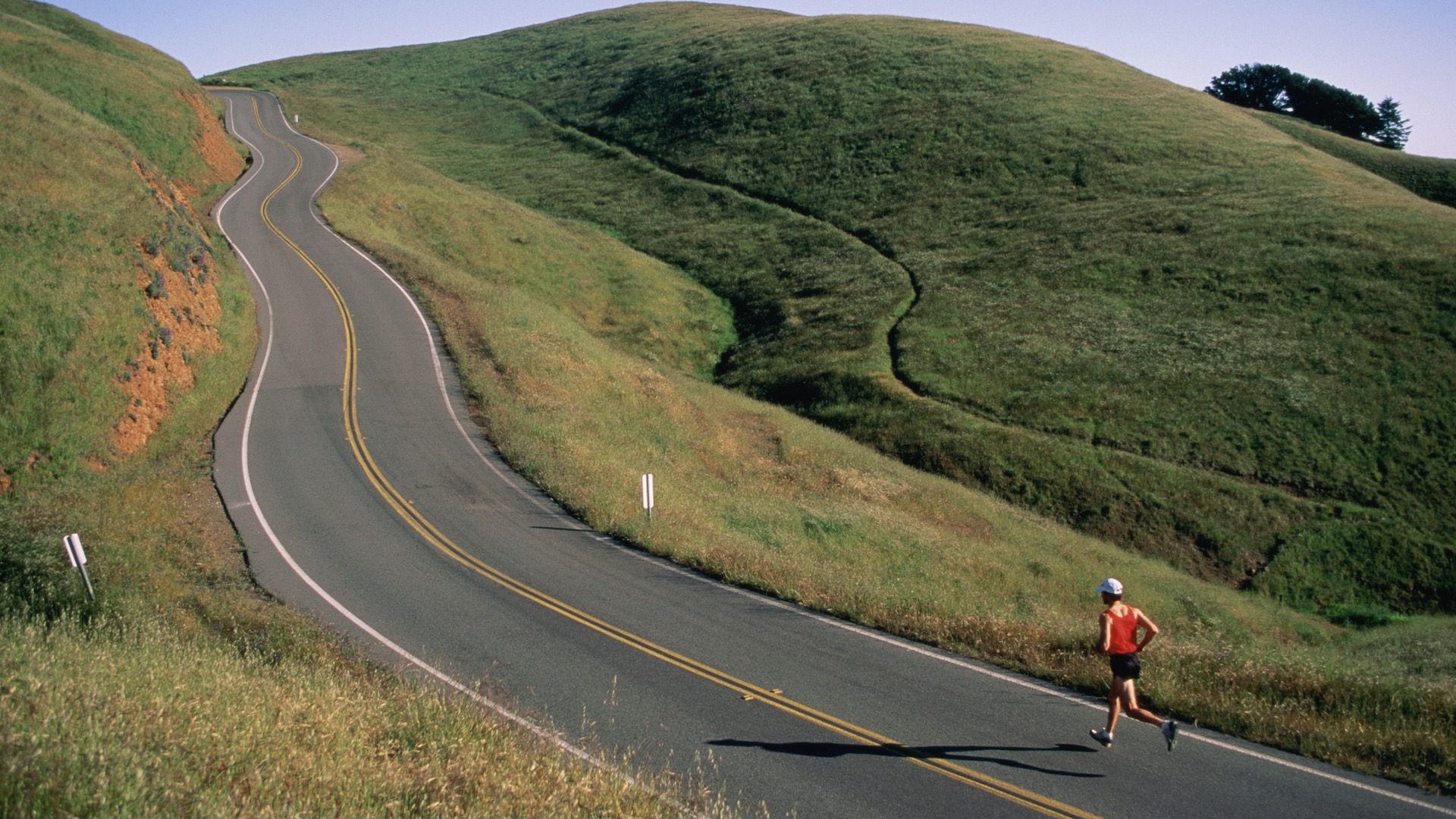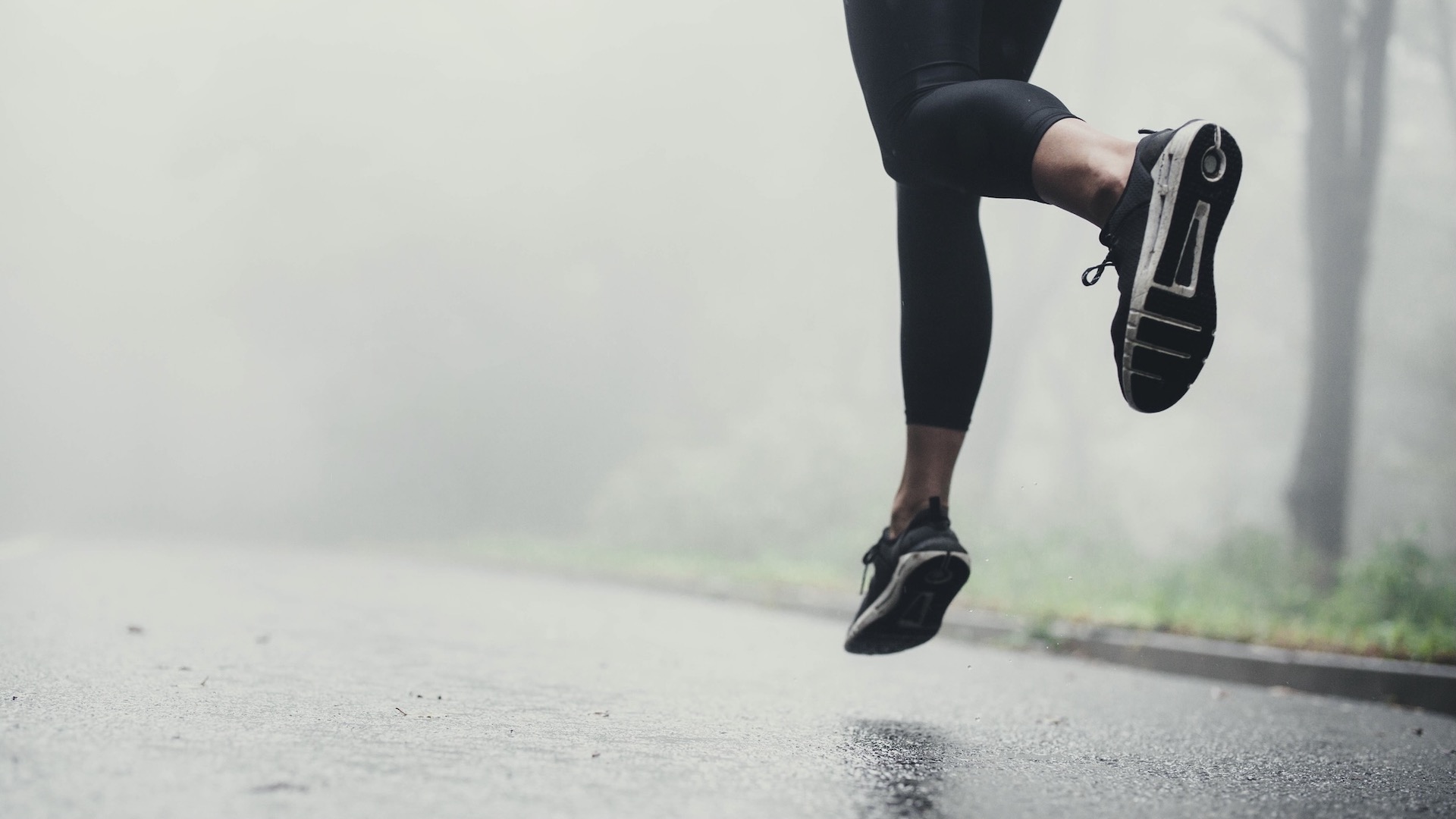Trail running vs road running: which is right for you?
We take a look at the pros and cons of running on and off-road to help you decide which is best for you (or pick a mix of both)

There is no doubt that there are many benefits of running, including mental and physical good health, but you will always hear people talking about why their choice of running, road or trail, is the best form of running. We take a closer look at the pros and cons of both road running and trail running.

Pros of road running
Road running is defined as running on pavement or tarmac. It might also take place on asphalt and running tracks.
Here are some of the advantages of road running.
Easy access
It’s very easy to go for a road run. For most people, this simply requires them to open the door, leave their home and run. It’s a very straightforward activity to run on pavements, tarmac paths and even some quiet road close to where you live, or, indeed close to a place of work or near a friend’s house.
Smooth underfoot
Tarmac is generally a hard and smooth surface for running. While there will be some undulations, such as tarmac repairs or pavement kerbs, the concept of road running is an activity that is done on even terrain.
All the latest inspiration, tips and guides to help you plan your next Advnture!
This means you know what to expect underfoot when you go for a run. As fitness coach Nataly Komova says: “When road running you can focus on simply running. Your speed will most likely be faster and your movement will be easier than when running on trails.”
Track performance
If you are tracking your performance and aiming for improvements in pace and speed, it’s generally accepted that it’s easier to do so while road running. Runners will be keen to match like for like and to compare one run to another and this is when tarmac is useful because there will be much fewer adjustments that need to be made for changes in terrain and underfoot conditions. This is because it’s highly likely that one section of road or pavement is the same as the next.
Just one pair of shoes
For the majority of road running, one pair of road running shoes will do the job well. Once you have your favourite road running footwear that suits your running gait you can simply run anywhere on tarmac. This is not the same for trail running, as you will discover below.
A purer discipline
Road running is easy to define and understand. For some runners, it's the purity of the sport, which is easy to do, measure and track, that gives it the edge over trail running.

Cons of road running
The impact
Road running is said to be less forgiving to muscles and joints. Because road running is a much more repetitive activity compared to trail running, it can cause niggles and injuries because the same muscles are being utilised step after step.
Nataly, a fitness expert for JustCBD, says: “Frequent road running can increase repetitive or overuse injuries because every landing occurs with nearly a similar foot strike.”
Many people also believe that road running is harder on joints and tendons than trail running. Looking at the research, it's difficult to be sure if this is true. In fact, one piece of research found that when comparing running on a sandy soft surface to running on asphalt the risk of tendinopathy decreased.
Although, another study claimed that there is no correlation between running surface and running injury.
Road dangers
Nataly points out that there are some obvious dangers for road runners. She says: “Running close to motorised traffic has obvious hazards so runners need to take more care.”
The same is true when running at night or in winter. Runners need to make sure they can be seen by other road users when it's dark.
More stress
Running on roads and pavements usually means you will be in urban or built up areas so it is likely to be less relaxing than running on trails surrounded by nature. This is obviously not a strict rule because it is possible to run on tarmac paths through green spaces and parks and some roads and pavements will be in the country, but trail runners will argue that their style of running is less stressful.
Run road, repeat
Road running is less likely to be as inspiring and motivating as running off-road on trails. It can feel very samey to always run on tarmac, mile after mile.

Pros of trail running
Trail running is defined as running in places that are away from tarmac and most man-made surfaces. The breadth of trail running terrain includes paths, forest tracks, hill trails and mountain routes.
So much to explore
Trail running can take you to so many amazing places. From parkland to forest to hills and mountains, there are thousands of miles of adventures to be enjoyed by trail runners all over the world.
Natural boost
Trail running is usually done in places surrounded by nature. Spending time amid nature is well documented to be good for mental health. Indeed, a study in 2012 found that regular exercise in a natural environment has the potential to cut the risk of suffering from poor mental health by half.
Lower impact
It’s widely believed that running on softer surfaces, such as grass and trails is better for the body. One study compared running on natural grass to running on asphalt and found that grass impacted lower pressure on the rear foot and forefoot. The researchers concluded that the maximum amount of pressure on the foot at any point when running was some 12% greater on asphalt compared to grass.
Another piece of research – including only 15 runners – in 2012 also concluded grass surfaces put less pressure on runner’s feet compared to concrete.
Alex Randall, a running coach, adds: “With trail running, the surface is less jarring to the legs and the impact of each footfall is not so hard on the joints."
Strength and stamina
When running on trails there are plenty of natural obstacles and undulations, such as rocks, tree roots, mud and vegetation, in a runner’s path. Nataly says: “Trail running is good for strength training and stamina because the uneven terrain challenges your muscles.”
Extra training
Trail running usually brings more potential for training on a variety of terrain, from flatter sections to hills. This means that runners will naturally build strength and stamina into their running programme.
Walk the hills
Many trail runners choose to walk longer hills and run the flats and descents. This makes sense if you are running longer distances because it helps with endurance and maintaining energy. Obviously, you can do the same when road running but it's much more common to hear trail runners calling for a walk up a hill.
It's trendy
Trail running has quickly grown in popularity in recent decades. Many more people are keen to transition from road running to trail running and to realise the benefits of being amid nature.

Cons of trail running
Injury prone
While there are benefits to the body’s strength and balance when running on trails, it’s also a fact that the natural obstacles can lead to accidents.
Alex, who is the founder and CEO of Revel Sports, says: “When trail running, there are obstacles, uneven ground, and other things that can get in the way of your run.”
This means that more care is needed when trail running.
Planning required
It might be that you have great trails close to your home but for many people a trail run requires some planning. You might need to drive to reach a network of trails and that makes this form of running less accessible.
New shoes
Trail running usually requires several different types of trail running footwear. This might be seen as a benefit if you enjoy buying new kit but it also comes with a cost.
Alex says: “It’s important to have the right kit for trail running and that comes at a price.”
There are different trail shoes to suit different terrains and conditions, such as trail running footwear for mud, or hard-packed forest trails, or hill, or road to trail running footwear. It's important to find the best trail running shoes for better traction and stability when running.
Your choice: pros and cons of trail and road running
At the end of the day, there are plenty of reasons to do road or trail running, or a mix of both. There are some disadvantages to both types of running but overall, running, whichever type you choose, is considered to be a great form of cardiovascular exercise.
- Best running tops: stay cool and comfortable wherever you run

Fiona Russell is a widely published adventure journalist and blogger, better known as Fiona Outdoors. She is based in Scotland and is an all-round outdoors enthusiast with favorite activities including trail running, mountain walking, mountain biking, road cycling, triathlon and skiing (both downhill and backcountry). Aside from her own adventures, Fiona's biggest aim is to inspire others to enjoy getting outside and exploring, especially through her writing. She is also rarely seen without a running skort! Find out more at Fiona Outdoors.
